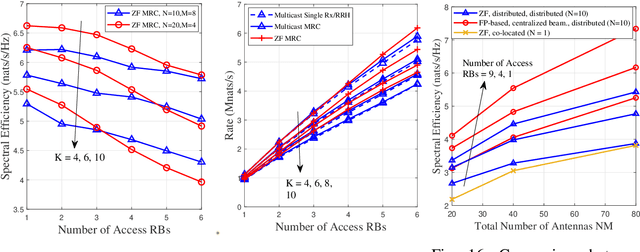Analysis and Design of Distributed MIMO Networks with a Wireless Fronthaul
Paper and Code
Nov 18, 2021



We consider the analysis and design of distributed wireless networks wherein remote radio heads (RRHs) coordinate transmissions to serve multiple users on the same resource block (RB). Specifically, we analyze two possible multiple-input multiple-output wireless fronthaul solutions: multicast and zero forcing (ZF) beamforming. We develop a statistical model for the fronthaul rate and, coupled with an analysis of the user access rate, we optimize the placement of the RRHs. This model allows us to formulate the location optimization problem with a statistical constraint on fronthaul outage. Our results are cautionary, showing that the fronthaul requires considerable bandwidth to enable joint service to users. This requirement can be relaxed by serving a low number of users on the same RB. Additionally, we show that, with a fixed number of antennas, for the multicast fronthaul, it is prudent to concentrate these antennas on a few RRHs. However, for the ZF beamforming fronthaul, it is better to distribute the antennas on more RRHs. For the parameters chosen, using a ZF beamforming fronthaul improves the typical access rate by approximately 8% compared to multicast. Crucially, our work quantifies the effect of these fronthaul solutions and provides an effective tool for the design of distributed networks.
 Add to Chrome
Add to Chrome Add to Firefox
Add to Firefox Add to Edge
Add to Edge